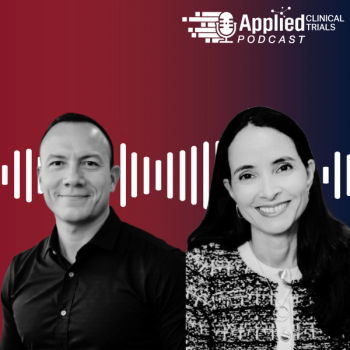
- Applied Clinical Trials-03-01-2010
- Volume 0
- Issue 0
Sizing Up the Clinical Research Market
Spending on research exceeds $35 billion, and clinical grant spending now tops $11 billion.
Each quarter I receive half a dozen emails and phone calls from professionals looking for the latest figures on the size and growth of the overall clinical research and clinical trial grants markets. This column provides a summary of my most recent analysis for general consumption and for input into business planning, budgeting, and market research purposes.
When I began tracking and analyzing clinical research spending back in the early 1990s, there were very few credible data sources. Today there is a vast improvement in the number and quality of information available. These sources provide top-line data on government and industry spending practices in nominal $US dollars, the most recent data through 2008. I then use metrics gathered from original research conducted by the Tufts Center for the Study of Drug Development (Tufts CSDD) or by various government and private organizations to focus in on clinical research and grant spending.
In my discussion of the results, I'll indicate where these metrics have been applied. All government figures include the NIH and other federal funding sources as determined by the National Health Expenditures Accounts (NHEA). Industry figures come from the Pharmaceutical Research and Manufacturers of America (PhRMA), Burrill & Company, which publishes research and development expenditures of biopharmaceutical companies that are not PhRMA members, and from annual reports of the 20 largest medical device companies.
Large and lopsided
Total spending on R&D, including NIH, other federal sources, pharmaceutical, biotechnology, and medical device companies, reached nearly $94 billion in 2008. Between 2000 and 2008, total R&D spending grew by 6.9% annually. Overall, however, the rate of growth in total R&D spending has been decelerating at 5.7% annually. No doubt the 2009 figures—when available—will show an even sharper rate of deceleration.
Although growth in total R&D spending has been slowing down, the same cannot be said for total spending on drug and device development. In 2008, more than $35 billion was spent on clinical research of investigational treatments, up from $18 billion in 2000, an 8.6% eight-year annual growth rate. During the period 2004 to 2008, clinical research spending from all sources grew by 9.0% each year. The proportion of total R&D spending attributed to clinical research activity is based on benchmark studies conducted by Tufts CSDD and published survey results from PhRMA.
It's important to note that clinical research activity receives more than $4 of every $10 dollars ($US), from all sources, of total R&D spending. But government spending on clinical research must be adjusted downward to isolate spending on clinical research of investigational drugs and interventions. The NIH and other federal sources spend the bulk (63%) of their clinical research budgets on epidemiologic and behavioral studies and research involving human blood and tissue samples. Slightly more than a third of total government spending on clinical research is for clinical trials testing of investigational treatments among study volunteers.
Industry is the primary driver of growth in spending on clinical research of investigational drugs and devices—accounting for 90% of total spending or nearly $32 billion. Slightly more than 10% of the total—$3.6 billion—comes from the NIH and other federal sources. Industry spending on clinical trials research grew 8.8% annually between 2000 and 2008, faster than the rate of growth in total R&D spending.
Between 2004 and 2008, the rate of growth in industry spending accelerated to 9.4% annually. Government spending on clinical trials grew at a comparable rate to that of industry spending during the eight-year period measured but grew at a substantially slower rate of 5.6% each year during 2004 to 2008, reflecting the Bush Administration's spending policies.
Study grants
Total spending on trial grants to investigative sites broke $11 billion in 2008, growing nearly 10% annually since 2000. This rate of growth is well below that observed in the previous decade. Between 1990 and 1999, CenterWatch reported a 16% annual growth rate in grants to trial investigators. However, during 2004 to 2008, growth in spending on investigative site grants slowed significantly to 3.5% each year. This is likely due to many factors including government and private sector efforts to contain rising operating and funding costs while the volume of clinical trial activity in both public and private sectors has been increasing.
Academic medical centers (AMCs) receive approximately half of all spending on trial grants. This includes both the government's net spending on trials of investigational treatments and AMCs share (36%) of private sector spending on clinical trial grants. I have adjusted the government's figures on grant spending to account for that portion of the grant allocated to infrastructure support (e.g., study staff training and IT development) and to study monitoring and data management. In the private sector, these expenses are included in overall clinical study budgets, but they are not typically captured in grants to investigative sites.
The adjustment factor used to derive a net clinical trial grant spending figure is based on research published by the NIH Director's Panel and the Institute of Medicine. Net government spending on clinical trial grants grew less than 5% annually between 2004 and 2008.
In 2008, pharmaceutical, biotechnology, and medical device companies spent more than $8 billion ($US) on investigator grants—nearly 75% of all dollars supporting public and private sector clinical research centers. The annual rate of growth in industry spending on clinical trial grants is the only area of private-sector research spending that did not increase during 2004 to 2008. This too is due to many factors including the impact of globalization where increasing numbers of investigators from emerging regions are recruited to conduct later-stage clinical trials.
Data published from several sources including major CROs (e.g., Kendle), Medidata Solutions, and Tufts CSDD document the dramatic economic disparity between global regions. Fully-loaded patient costs per trial (including study staff labor costs, procedural costs, and volunteer compensation) in China and India, for example, have historically come in as much as 50% to 60% less than that of trials conducted in North America and Western Europe.
Awaiting 2009 figures
I continue to refine this analysis. Through 2008, for example, most of the data analyzed is US-centric. Data on industry spending covers FDA-regulated R&D only and therefore substantially underestimates total global industry spending on R&D. This US-centric approach is consistently used by various analysts and agencies in an effort to derive more consistent comparisons between US government-regulated public and private funding sources.
There is no question that clinical research and clinical trial grant markets have been hard hit by the global economic downturn. Industry insiders and financial analysts speculate that spending in 2009 may be as much as 18% to 20% below 2008 levels in select areas due to project suspensions and terminations; divestitures of biotech, small pharma, and medical device companies; and private sector consolidation. Regrettably, 2009 figures are not yet available to determine if there is any basis for such speculation.
In the meantime, I'll look to update this analysis as new data and new resources become available. And as always, I welcome comments and suggestions.
Related reading
For information about data sources, how they were derived, and for future reference, the following are recommended:
1. R. Dorsey et al., "Funding of US Biomedical Research, 2003-2008," Journal of the American Medical Association, 303 (02) 137-143 (2010)
2. H. Moses et al., "Financial Anatomy of Biomedical Research," Journal of the American Medical Association, 294 (11) 1333-1342 (2005).
3. National Science Foundation Division of Science Resource Statistics, Federal Funds for Research and Development: Fiscal Years 2005-2007,
Kenneth A. Getz MBA, is a Senior ResearchFellow at the Tufts CSDDand Chairman of CISCRP,both in Boston, MA, email:
Articles in this issue
over 15 years ago
Applied Clinical Trials Digital Edition - March 2010over 15 years ago
Applied Clinical Trials Digital Edition - March 2010, Supplementover 15 years ago
The State of Clinical Outsourcingover 15 years ago
SOPs: A Must for Sitesover 15 years ago
Business and People Update March 2010over 15 years ago
Health IT Promises Timely Drug Informationover 15 years ago
RA Market, Small But Fierceover 15 years ago
Putting Patients Firstover 15 years ago
EU Trials Come Under Securityover 15 years ago
Translating for SponsorsNewsletter
Stay current in clinical research with Applied Clinical Trials, providing expert insights, regulatory updates, and practical strategies for successful clinical trial design and execution.






.png)



.png)



.png)
.png)
